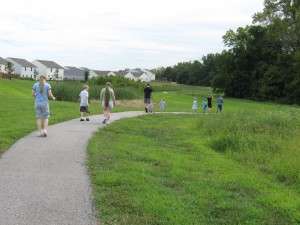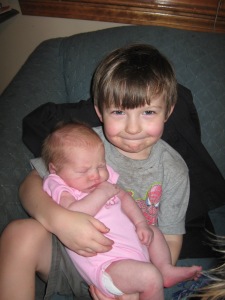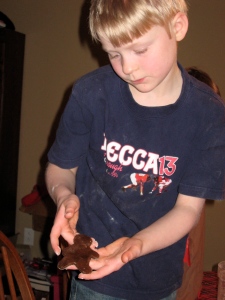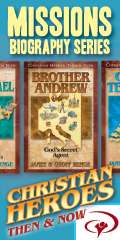I keep reading posts by homeschooling mothers talking about all of these learning problems that their children have. I was a first grade teacher in public school before I became a homeschooler. I wanted to do the things they taught me about in college when I started teaching in the classroom, because they made sense to me. But I couldn’t because the school had a system. They used textbooks. Everybody used the same books, and rushed every student through these books page by page. There was no time for anybody to have a learning difference. The ones who weren’t ready to read got held back in first grade. Then they suffered that stigma of “failing” first grade. I hated that. But it had to be done. That’s how the system worked. If they couldn’t handle the second grade books and program, I couldn’t send them on to suffer even more failure.
But the theories and methods I learned about in college were more about letting children do things that helped them get ready to read. The big thing at that time was whole language. We learned that we should use real books instead of textbooks. We learned that we should let them be creative instead of making them use workbooks. We were taught that we should immerse them in a topic by using unit studies, and by connecting new learning to knowledge and experience they had already attained.
I couldn’t figure out how to do any of that with all the workbooks I had to get the class through and the rigid system that was already in place. I had to do things the way all the other teachers did them. I’m sure I wouldn’t have had a job as long as I did if I had tried to stray too far from the norm. I did a few of the things that Ruth Beechick recommends long before I ever heard of her. We made lists of words that start with the same letter or have the same spelling pattern. We wrote stories together as a class. I even had them do some copywork. But mostly I had to try to rush the children through all of the books and hope they could pick it up by the end of the school year.
Now that I’m homeschooling my own children, I can do what I wanted to do all along – what I was trained to do in my education classes. I can do all kinds of pre-reading activities with my children. I can read aloud to them and take them places and point out things in nature. I can fill them up with all kinds of experiences and knowledge before I ever ask them to write anything down. I can give them something to write about, to think about, to wonder about. They can make connections in their own minds in their own time. They can look at books on their own and make the knowledge their own. I’m available to them when they want to come and share what they’ve been learning through reading or being read to or through watching a video or even sometimes through playing a video game. I’m not concerned about dyslexia or dysgraphia or any other dys- somebody might come up with next. Each of my kids is learning at his own rate and in the way the Lord wants him to, because I’m letting Him lead. I’m giving them time to grow and develop in the way He made them to. I’m so glad I don’t have to force my children to perform according to an arbitrary schedule or system set in place by people who don’t even know my children and most likely don’t know God, either. I would rather get my wisdom from my Creator than from administrators and professional educators.
 I was so excited to find Susan Schaeffer Macaulay’s book For the Children’s Sake when my first child was just a toddler. Her description of Charlotte Mason’s methods sounded like the ideal way to educate children. Then I read more about Charlotte Mason and became even more convinced that God was telling me to use real, living books and to let them learn a lot from nature. I also believe in short lessons and lots of time to play. When I read Teaching Children which is like a companion book to For the Children’s Sake, I knew I was home.
I was so excited to find Susan Schaeffer Macaulay’s book For the Children’s Sake when my first child was just a toddler. Her description of Charlotte Mason’s methods sounded like the ideal way to educate children. Then I read more about Charlotte Mason and became even more convinced that God was telling me to use real, living books and to let them learn a lot from nature. I also believe in short lessons and lots of time to play. When I read Teaching Children which is like a companion book to For the Children’s Sake, I knew I was home.
I have loved our homeschooling journey. We have learned so much together as a family. And each of my children has learned so much on his own as he delves into what interests him. We use the Sonlight reading list to pick out so many very good books that have drawn us even closer together as a family as we read them together. Recently, I have discovered Cindy Rushton who has helped me pull together lots of things I couldn’t seem to figure out on my own. Notebooking has helped in our organization and in getting something on paper, so that our learning is set in place by the act of processing the information by narrating and writing about what we’ve read and learned. And even more recently I discovered Heart of Wisdom, and finally got the revelation that the Bible really is the most important thing for us to study. I used to say it was, but I didn’t know how to incorporate it into our homeschool plan. Robin Sampson has convinced me of its importance and shown me how to teach it in a way that my children will be excited about it and will really learn it because they want to. She and Cindy both encourage us to pray and find out God’s will for every detail of our homeschooling. I’m grateful for these mentors who are helping so many of us to teach our children well and love them well. And their devotion to the Lord and His Word and His will inspire me to press in and read His Word more and pray and seek His will for each of my children’s lives. Their example has helped me to set goals and define the things that are important to me and that will improve our family life.
Another author who influenced my thinking was Dr. Raymond Moore. His book, The Successful Homeschool Family Handbook, helped me to see that giving children real things to do, projects and tasks to accomplish, would produce the best learning. He believed in giving children time to mature before asking them to do academic work. He did research that showed that eye muscle development and fine motor skills develop later than 5 or 6 years old. He encouraged parents to wait and let the child’s readiness signal when to start academic work.
Pushing children to read when they’re six years old or younger, pushing them to write on the lines and make it look nice before they’re physically or mentally ready is doing those children a great disservice. And then to call this immaturity a learning problem or learning disability and to try every kind of curriculum to find the one that works for this child seems to me to be a waste of money and time, not to mention the stress and worry that this kind of thinking engenders. I just want to encourage mothers who are afraid their child may be behind to realize that there is no “behind”. All children are different, and 6 years old is not the magic age that every child should be ready to learn to read. Don’t stress. Don’t worry. Don’t fear. If you truly believe in Ruth Beechick’s teachings, Charlotte Mason’s method, Cindy Rushton and Robin Sampson’s approaches, then give your children some freedom to learn and grow and develop according to their bents, the way God made them. Relax and let God have the wheel. He knows the way.






















 "Oh that God would give every mother a vision of the glory and splendor of the work that is given to her when a babe is placed in her bosom to be nursed and trained! Could she have but one glimpse in to the future of that life as it reaches on into eternity; could she look into its soul to see its possibilities; could she be made to understand her own personal responsibility for the training of this child, for the development of its life, and for its destiny,--she would see that in all God's world there is no other work so noble and so worthy of her best powers, and she would commit to no other's hands the sacred and holy trust given to her." -JR Miller
"Oh that God would give every mother a vision of the glory and splendor of the work that is given to her when a babe is placed in her bosom to be nursed and trained! Could she have but one glimpse in to the future of that life as it reaches on into eternity; could she look into its soul to see its possibilities; could she be made to understand her own personal responsibility for the training of this child, for the development of its life, and for its destiny,--she would see that in all God's world there is no other work so noble and so worthy of her best powers, and she would commit to no other's hands the sacred and holy trust given to her." -JR Miller






